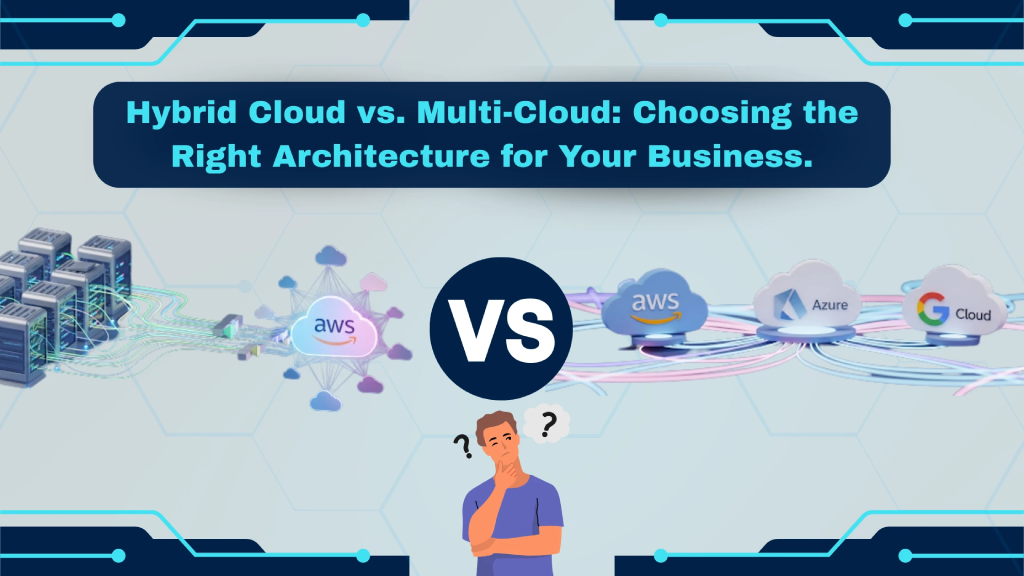Loading content...
- Software DevelopmentIT Consulting & DesignAI & Data SolutionsQuality AssuranceTeam & Resource SupportBusiness Support Services
From regulated workloads that demand control and data residency to AI and analytics that thrive on best-of-breed services, this guide compares hybrid and multi-cloud architectures—what they are, where they fit, and how to choose using ROI-focused criteria and a 12–24 month TCO lens.
The majority of enterprises run hybrid strategies to balance control, compliance, and predictable costs.
Organizations leverage multiple providers like AWS, Azure, and GCP to gain flexibility and avoid lock-in.
TCO studies show hybrid lowers steady-state costs, while multi-cloud optimizes variable workloads with spot/discount pricing.
Loading content...
Let's discuss your project and create a custom web application that drives your business forward. Get started with a free consultation today.

A regional bank processes millions of customer records every night, keeping sensitive data on-premises for compliance while bursting into public cloud capacity on quarter-end peaks. Across the hallway, a data science team runs high-cost AI training on two different public clouds to get the fastest GPUs and best pricing. Which approach is smarter—and which one scales with the business?
Hybrid Cloud vs Multi-Cloud is the strategic fork every IT leader faces today. More than 85% of organizations use hybrid strategies, and roughly 75% adopt multi-cloud approaches. This adoption rate highlights the fact that there is no universally applicable cloud strategy.
This post unpacks the practical differences, trade-offs, and decision levers so you can pick an architecture that aligns with cost, compliance, performance, and time-to-market.
Read on to get practical, ROI-focused guidance you can brief executives on in 10 minutes.
| Feature | Hybrid Cloud | Multi-Cloud |
|---|---|---|
| Pros | Stronger data control and sovereignty; predictable costs for steady-state workloads; satisfactory fit for legacy and Windows-centric apps (Provided Research). | Service selection flexibility; resilience and redundancy; avoids single-provider risk (Provided Research). |
| Cons | Integration complexity; requires investment in private cloud/on-prem operations. | Higher operational overhead; potential for fragmented governance and unexpected costs. |
Workload profiles drive outcomes.
Business outcome: Run a 12–24 month TCO comparison, including egress and management overhead.
Business outcome: Pick hybrid when compliance could delay launches; multi-cloud only if governance is mature.
Business outcome: Map workloads to the environment that minimizes latency and friction.
Outcome: reduced incident response time and clearer compliance boundaries.
Outcome: forecast cloud spending realistically.
Both Hybrid Cloud and Multi-Cloud offer distinct advantages:
Next Step: Begin by conducting a workload inventory and total cost of ownership (TCO) analysis, then incorporate Cloud Security Posture Management (CSPM) governance, and finally, test on a small scale before implementing a broad rollout.
Well, you could keep researching. Or—we can just talk it through. Book a free chat with Moltech Solutions Inc. We’ll take a look at your project, share what we think, and point you in the right direction. No hard sell. Just real, usable advice.
Let's connect and discuss your project. We're here to help bring your vision to life!